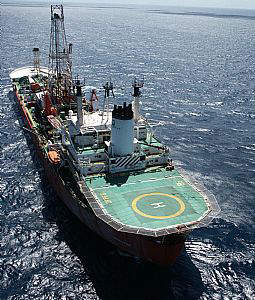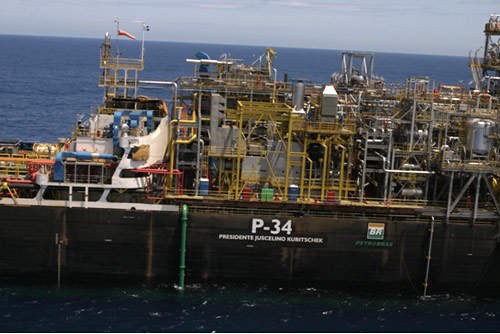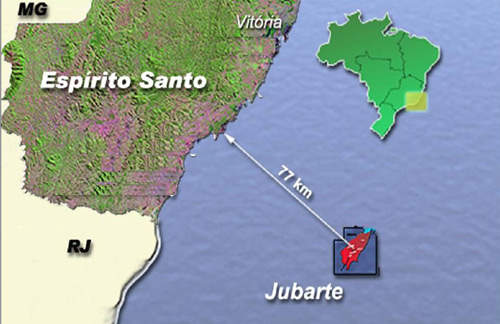The Jubarte field is located 70km offshore the state of Espírito Santo, Brazil, adjoining the Coachote field. It lies at a water depth of 1,300m in the northern Campos Basin in block BC-60.
Discovered in January 2001, the field is owned and operated by Petrobras. The project was Petrobras’s largest discovery since 1996, with oil reserves estimated at 600 million barrels.
The field is a pre-salt area where oil and gas deposits lie under a layer of sal, making it difficult to tap the potential.
Jubarte field development
Petrobras obtained the licence to conduct long-term tests at the field in July 2002. That year, testing started with the installation of the FPSO Seillean. Operations began in October 2002 following the drilling of well 3 ESS-110H. The well was drilled horizontally until 1,300m within the oil-bearing formation. Development of the field was planned under three stages: pilot, phase I and phase II. The commercial feasibility of the field was confirmed in December 2002 with the start of the production pilot.
The pilot phase, aimed at long duration testing, included production via 3 ESS-110H. During the testing period, the well produced 16,500 barrels of oil and 100,000m³ of natural gas a day. Oil extracted from the well was stored in FPSO Seillean to transport it to the refineries. Until January 2006 the well ESS-110 HPA produced 20,000bpd.
Phase I production started in late 2006 with the start of operations of FPSO JK (P-34), which had a processing capacity of up to 60,000 barrels. Phase I covered four producing wells.
The Jubarte-4 horizontal well produces 15,000bpd of heavy oil, with API gravity of 17º. The other three wells contribute nominal capacities. With FPSO JK (P-34), the first pre-salt production resulted in production up to 18,000bpd in September 2008.
Phase II production started in December 2010 through FPSO P-57. About 15 producing wells and seven injection wells were planned under this phase.
Platforms
FPSO Seillean was originally built as a single well oil production ship. It was upgraded into a deepwater vessel in 1997-98. It produces crude oil from wells, stores the produce and transports it to tankers. The FPSO can be repositioned and the processing plant has been adapted to handle the oil type at the field.
FPSO JK (P-34) was named after former Brazilian president Juscelino Kubitschek. It was initially deployed in the Campos Basin and later modified for use at the Jubarte field.
The contract for FPSO P-57 was awarded to SBM Offshore in January 2008. SBM’s tanker MT Accord was converted to the FPSO through hull and marine conversion. SBM awarded the conversion contract to Keppel Offshore and Marine in October 2008. In October 2010, Keppel delivered the FPSO to SBM. Petrobras received the FPSO in December 2010.
Infrastructure
In May 2007 Aker was awarded two supply contracts worth $90m by Petrobras for a gas pipeline-end manifold to the Jubarte phase II project.
The work includes a gas pipeline end manifold with six slots, a data acquisition and monitoring system and vertical connection modules, along with tools, accessories and spares. The manifold for the project will be deployed at 1,193m water depth and tied with the Sul Capixaba gas export pipeline.
In November 2009 Aker Solutions secured a $37m contract for supplying eight subsea boosting systems (Moho) and one emergency valve (ESDV) for the project.
In June 2010, PGS was contracted to install a fibre-optic permanent seismic monitoring system at the field.
Jubarte production
The first oil in the pre-salt layer at the Jubarte field was produced in September 2008. Production from the well was expected to be 10,000-15,000bpd; however, it produced 18,000bpd. The production enables the company to develop pre-salt reserves offshore Brazil.





